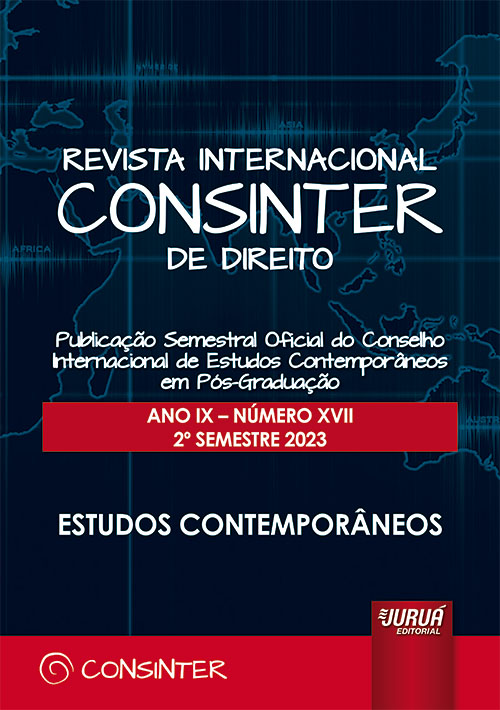Main changes of the second chance mechanism introduced by law 16/2022, reform of the consolidated text of the bankruptcy law
DOI:
https://doi.org/10.19135/revista.consinter.00017.30Keywords:
Second chance, Consolidated Text of the Brankruptcy Law, discharge of debtAbstract
The second chance mechanism, which allows the exoneration of some of the debts under certain conditions, has been subject to various relevant modifications by Law 16/2022, reforming the Consolidated Text of the Bankruptcy Law. The objective of this work is to analyze, based on authorized doctrine these modifications, since it is based on the hypothesis that some of them are not clear enough, although some others deserve a positive assessment. It is concluded that the reform is open to criticism regarding the determination of the conditions required of the debtor in order to qualify for the discharge. However, we consider that the elimination of the previous liquidation and the satisfaction of a part of the credits as requirements to access the discharge of debt deserve a positive assessment. Finally, an assessment is made on the modification related to the debts that can be subject to exoneration. Despite the fact that there is an expansion of the same, and the fact that part of the exonerated credit corresponds to public debt may seem like progress, a careful reading of the precept that regulates it allows us to affirm that an important part of this credit is not exonerated, which can have a negative effect for the debtor, since the amount of this debt is usually relevant.
Downloads
References
AZOFRA VEGAS, Fernando, “La exoneración del pasivo insatisfecho tras la transposición de la Directiva 2019/1023”, Revista General de Insolvencias & Reestructuraciones, núm. 7, 2022 (versión digital).
CUENA CASAS, Matilde, “Reforma concursal y exoneración del pasivo insatisfecho ¿avance o retroceso?”, Disponible en https://www.elnotario.es/opinion/opinion/11404-reforma-concursal-y-exoneracion-del-pasivo-insatisfecho-avance-o-retroceso, Acceso el 27 de octubre de 2022.
ESCOLÀ I BESORA, María Elisa, “La exoneración con liquidación de la masa activa. La posición de la vivienda habitual”, La Ley Insolvencia: Revista Profesional de Derecho Concursal y Paraconcursal, núm. 13, 2022 (versión digital).
FERNÁNDEZ PÉREZ, Núria, “La exoneración del pasivo insatisfecho tras la ley 16/2022 de 5 de septiembre”, Anuario de Derecho Concursal, núm. 58, 2023 (versión digital).
GONZÁLEZ-ORÚS CHARRO, Martín, “La exoneración del pasivo insatisfecho en el Texto Refundido de la Ley Concursal”, Revista de Derecho Mercantil, núm. 321, 2021 (versión digital).
ORRICO SÁNCHEZ, Ignacio, “Luces y sombras de la exoneración del pasivo insatisfecho. Algunas propuestas de mejora”, Anuario de Derecho Concursal, núm. 53, 2021 (versión digital).
SANCHO GARGALLO, Ignacio, “El requisito de la buena fe para obtener la exoneración del pasivo insatisfecho”, Revista General de Insolvencias & Reestructuraciones, núm. 5, 2022 (versión digital).
TOMÁS TOMÁS, Salvador, “La exoneración del pasivo insatisfecho tras la ley 16/2022, de 5 de septiembre”, Anuario de Derecho Concursal, núm. 58, 2023 (versión digital).
VÁZQUEZ CUETO, José Carlos, “La relevancia del acuerdo extrajudicial de pagos en la exoneración del pasivo insatisfecho: régimen actual y posibilidades de evolución”, Anuario de Derecho Concursal, núm. 53, 2021 (versión digital).
Published
How to Cite
Issue
Section
License
Copyright (c) 2023 Judith Morales Barceló

This work is licensed under a Creative Commons Attribution-NonCommercial-ShareAlike 4.0 International License.
For universalization and free sharing of knowledge, CONSINTER Journal is indexed under the Creative Commons 4.0 License
Attribution – Non-Commercial Use – Sharing by the same 4.0 Brazil license.
It’s allowed:
– Copy, distribute, display and execute the work
– Create derivative works
Under the following conditions:
ATTRIBUTION
You must give credit to the original author, as specified by the author or licensor.
NON-COMMERCIAL USE
You may not use this work for commercial purposes.
SHARING BY THE SAME LICENSE
If you change, transform, or create another work based on it, you may only distribute the resulting work under a license identical to this one.
For each new use or distribution, you must make clear to others the license terms for this work.
Legal License (full license): https://creativecommons.org/licenses/by-nc-sa/4.0/deed.pt_BR









